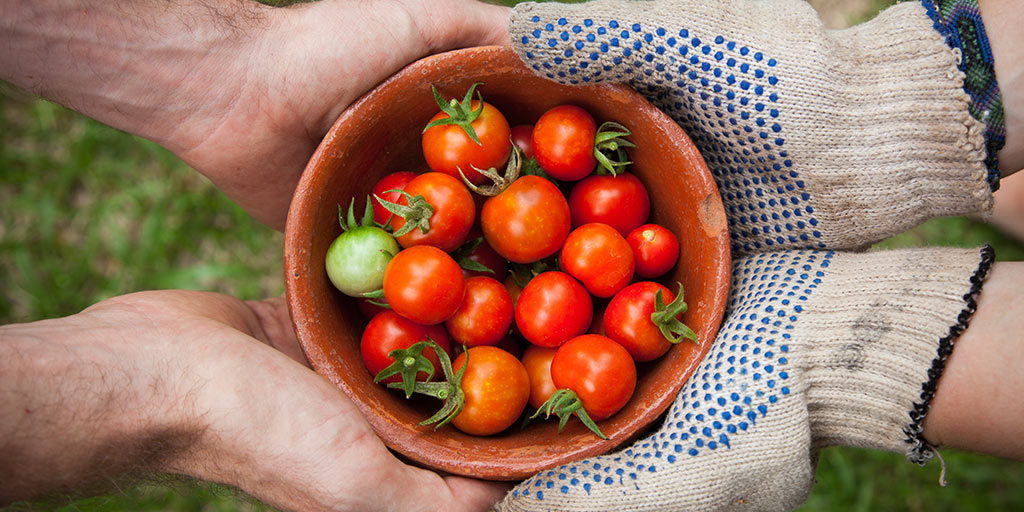Ahhh, summer, what’s not to love? Blissful sunshine, warm weather, extra daylight, and most importantly, ripe tomatoes—Mmm mmm good! The sizzling season wouldn’t be complete without indulging in a sweet juicy tomato fresh off the vine. Growing your own food in the comfort of your backyard has endless benefits. But how do you get those delicious results? The answer is simple: the soil!
Soil is more than just dirt—it’s the foundation of gardening. Without its richness under the right conditions, your tomato plant would lack a plentiful food supply to support clean, healthy growth. If you’re having issues figuring out which tomato soil will help produce the most flavorful fruit, then you’ve come to the right place.
Soil Structure and Texture
To grow that perfect tomato full of flavor, it’s best to plant them in loam or sandy soil. A solid soil structure is vital to allow proper airflow and water into the soil, which could greatly influence plant development. This means the hardy plants prefer loose, well-drained soil, so avoid clay-heavy options—that’s their only kryptonite because of the density limits for roots to develop. Soil for tomato plants must be able to drain well while simultaneously retaining enough water to prevent the roots from drying out.
So, what exactly is loam and sandy soil? Loam soil is a balanced mixture composed of the three main types of soil: sand, silt, and clay. In contrast, sandy soil is made up of a more gritty texture of sand particles. Next time you’re out in your backyard garden, feel the soil’s texture by picking up some and rubbing it in between your fingers. Compared to its counterpart, loam soil has a relatively large consistency.
pH
The chemical makeup of your soil is critical to healthy tomato growth. Every home gardener needs to know whether the soil is acidic or alkaline—The pH scale is used to define the acidity or alkalinity of your soil. Soil pH plays a starring role in determining the availability of most of a plant’s crucial nutrients. Most soils are naturally slightly acidic, however, a pH of 7.0 is considered neutral. Tomatoes are acid lovers, so they grow best in soils with a pH between 6.0 and 6.8.
When to Test pH
Testing the pH of your soil can be performed at any time, but when should you test? What are telltale signs? If you find yellowing foliage, are making new veggie or fruit plots, or when you see growth isn’t thriving, it’s worth giving your pH a little peek.
Moisture
Just like your skin, your plants soil needs moisture. Soil moisture measures soil’s heath, and is one of the most important factors in influencing vital nutrients. It’s no secret keeping your tomato plants hydrated is the key to abundant growth. The best soil for tomato plants requires discovering a perfect balance—not too much, not too little. Watering too generously can cause the roots to split. But too little can affect yielding or cause blossom end rot.
At first glance, you’d probably think those black, sunken spots on your tomatoes came from pesky pests or unfortunate diseases. But neither fit the case. Blossom rot happens when the plant lacks calcium and access to consistent moisture. While calcium helps build us strong bones, it helps your tomato plant grow up big and strong too. Although it’s a common problem at the beginning of the growing season, it can occur at any time, depending on the soil conditions.
If your tomatoes have a calcium deficiency, try a counteractive concentrated spray. Simply apply it to your developing plants, sit back and watch them grow!
Fertilization
Tomato plants are hefty eaters who need plenty of nourishment to maintain their health throughout the growing season. When prepping for the best soil, add compost or a boosting fertilizer. Fertilizer is plant food, and it’s a tomato plant’s favorite dish. Tomatoes thrive in fertile soil filled with tons of organic materials, especially phosphorus and potassium.
Learning about your soil’s nourishment is to know its fertility. For optimal growth, a plant needs a healthy balanced diet. How can you tell if your tomato plant is getting enough of each food group? A soil test. Taking an accurate soil sample is the only way to truly know your soil nutrient status.
Soil Testing
Once you know what kind of soil you’re working with, you can watch your garden flourish. Getting a soil test is the best investment any home gardener can make. A good test will measure pH, nitrogen, phosphorus, potassium, and basic nutrients. A soil test should indicate what key elements are missing.
To take a sample, our kit comes with 3 essential items: mixing vial, easy-to-use stripes, and informative booklet. Follow the manufacturer’s instructions. With the Accu-Grow Soil Test Kit’s easy-to-use strips, measure your soils pH, phosphorus, and potassium in the soil. It’s best to gather samples every three to five years, preferably during fall season.
Conclusion
There you have it! To grow beautifully, tomatoes need good soil, the right amount of water, and the sun’s golden rays. Once you have the best soil for tomatoes, you’ll be planting the tastiest produce in no time. Check out our tomato plant guide to learn more about how to grow lush homegrown tomatoes. From there, shop our wide variety of the savory fruit and the Southern Grove Collection to be in for a deliciously juicy treat.

